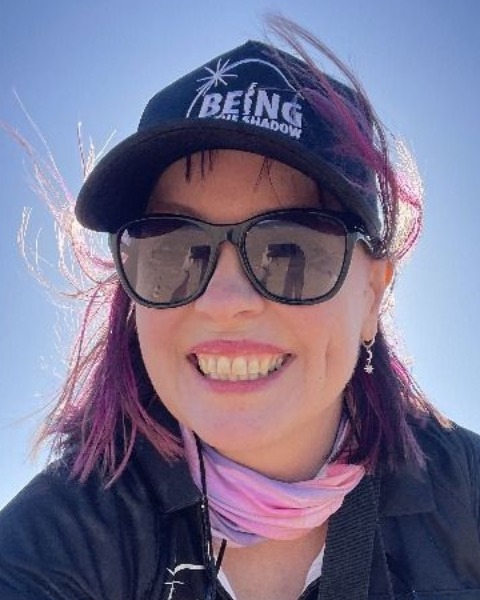Reflecting on the Solar Eclipse and Applying Lessons Learned Going Forward
Session: 5D: 10-Minute Orals (4)
5D-2 - What Do We Lose (or Perhaps Gain) When Clouds Obscure a Total Solar Eclipse?
Thursday, August 22, 2024
4:15 PM - 5:05 PM US PDT

Kate Russo
Founder - Author, Psychologist, Eclipse Chaser
Being in the Shadow
LANNERCOST, Queensland, Australia
Lead Presenter(s)
The Total Solar Eclipse (TSE) of April 2024 provided an incredible opportunity for Americans to experience the breathtaking phenomenon of totality. Around 32 million people in the US alone lived within the path of totality, and an estimated 4 million traveled into the path on the day.
Yet, the weather threw a curveball at everyone – regions predicted to have the clearest skies in April were shrouded in thick clouds, while places expected to have low chances of clear skies offered some of the best views.
Many eclipse enthusiasts, scientists, and media personnel headed to Mexico and Texas, the US state that historically had the best odds for clear April weather. However, as the saying goes, “Climate is what we expect, and weather is what we get.” In the stress-filled days leading up to the eclipse, all eyes were on the weather forecasts, and many experienced eclipse chasers led the mass exodus across state lines toward clearer skies.
Post-eclipse media reporting, social media posts, personal communication, and survey responses indicated people were mainly positive and enthusiastic about their eclipse experience, even in cloudy locations.
This situation raises an intriguing question: What do we lose (or perhaps gain) when clouds threaten to obscure a total solar eclipse?
This presentation draws upon anecdotal reports and Kate's research (Total Addiction, 2012; Project Awe, 2023; and Post-Eclipse Surveys, 2024) to offer insights into how we can prepare the general public to experience the awe and wonder of eclipses and other astronomical events regardless of weather.
Yet, the weather threw a curveball at everyone – regions predicted to have the clearest skies in April were shrouded in thick clouds, while places expected to have low chances of clear skies offered some of the best views.
Many eclipse enthusiasts, scientists, and media personnel headed to Mexico and Texas, the US state that historically had the best odds for clear April weather. However, as the saying goes, “Climate is what we expect, and weather is what we get.” In the stress-filled days leading up to the eclipse, all eyes were on the weather forecasts, and many experienced eclipse chasers led the mass exodus across state lines toward clearer skies.
Post-eclipse media reporting, social media posts, personal communication, and survey responses indicated people were mainly positive and enthusiastic about their eclipse experience, even in cloudy locations.
This situation raises an intriguing question: What do we lose (or perhaps gain) when clouds threaten to obscure a total solar eclipse?
This presentation draws upon anecdotal reports and Kate's research (Total Addiction, 2012; Project Awe, 2023; and Post-Eclipse Surveys, 2024) to offer insights into how we can prepare the general public to experience the awe and wonder of eclipses and other astronomical events regardless of weather.

